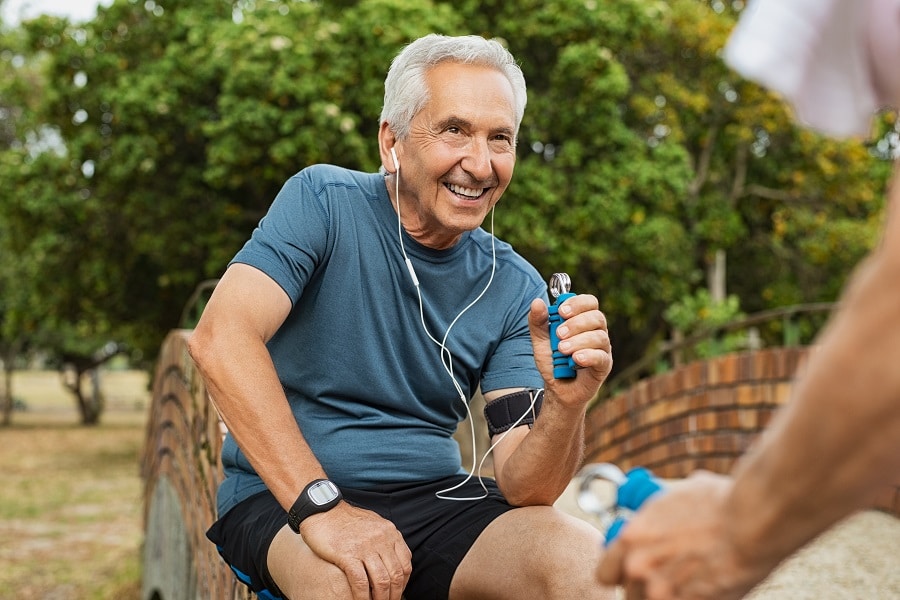The hip, a crucial joint in the human body, plays a pivotal role in our daily activities, from walking and running to sitting and standing. Its mobility can significantly impact our overall health, athletic performance, and quality of life. As we delve into the intricacies of the hip and the exercises that can enhance its mobility, readers will gain a deeper understanding of the importance of maintaining and improving hip flexibility and strength.
Contents
The Anatomy of the Hip

The hip joint, often likened to a ball-and-socket mechanism, is one of the body’s largest joints. It’s where the thigh bone (femur) meets the pelvis. This unique design allows for a wide range of motion, making it essential for various activities. Surrounding the joint are many muscles, including the glutes, hip flexors, and adductors, work in tandem to facilitate movement.
Understanding the anatomy of the hip is not just for medical professionals. A basic grasp of its structure can help individuals tailor their exercises more effectively. By knowing which muscles to target and how the joint functions, one can optimize their workouts to enhance mobility and reduce the risk of injury.
Why Hip Mobility Matters

Hip mobility is more than the ability to move the hip joint in various directions. It’s a reflection of the overall health of the lower body. Reduced hip mobility can lead to lower back pain, a common ailment in today’s sedentary society. The hip’s range of motion can directly influence posture and the spine’s alignment.
Furthermore, athletes and fitness enthusiasts will attest to the significance of hip mobility in performance. From sprinters to weightlifters, the hip’s flexibility and strength can make or break an athlete’s performance. Moreover, maintaining hip mobility becomes crucial as we age in preventing injuries and ensuring an active lifestyle.
Signs of Reduced Hip Mobility

One of the first signs of reduced hip mobility is a noticeable difficulty performing basic movements, such as squatting or lunging. Once taken for granted, these movements may become challenging or even painful. Additionally, discomfort during routine activities, like climbing stairs or getting out of a car, can indicate compromised hip mobility.
Another telltale sign is an altered walking pattern. Some individuals might develop a limp or a shuffle, while others may experience stiffness after sitting for prolonged periods. Recognizing these signs early on can be instrumental in addressing the issue before it exacerbates, making the subsequent recovery process smoother and more effective.
Warm-Up: Preparing the Hips

A proper warm-up is paramount before diving into any exercise, especially those targeting the hips. Warming up increases blood flow to the muscles, preparing them for the activity ahead and significantly reducing the risk of injury. Simple movements, such as leg swings or hip circles, can effectively prepare the hips for more intensive exercises.
The benefits of a warm-up extend beyond injury prevention. It also aids in enhancing the effectiveness of the workout. As the muscles become more pliable and the joints lubricated, exercises can be performed with a greater range of motion. This ensures that the targeted muscles are engaged more effectively, leading to better results in the long run.
Hip Flexor Stretches

The hip flexors, located at the front of the hip, play a crucial role in movements like walking and running. However, prolonged sitting can lead to tight hip flexors, which can impede mobility. Hip flexor stretches are designed to alleviate this tightness, promoting flexibility and strength.
To perform this stretch, begin by kneeling on the floor. Step one foot forward, creating a 90-degree angle with the knee. Push the hips forward gently until a stretch is felt in the front of the hip. Hold for 20-30 seconds, then switch sides. It’s essential to ensure the back remains straight throughout the stretch to prevent any undue strain.
Glute Bridges

Targeting the glutes, glute bridges are an excellent exercise for enhancing hip mobility. The glutes, when strong and flexible, can significantly improve hip movement and reduce the risk of injuries. This exercise not only strengthens the glutes but also promotes flexibility in the hip joint.
To begin, lie on your back with your knees bent and feet flat on the floor. Place your arms by your sides, palms facing down. Pressing through the heels, lift the hips off the ground until the body forms a straight line from the shoulders to the knees. Squeeze the glutes at the top, then lower back down. Repeat for the desired number of reps.
Lateral Leg Raises

Lateral leg raises target the hip abductors, the muscles responsible for moving the leg away from the body’s midline. Strengthening these muscles can enhance hip stability and mobility, making movements like walking and running more efficient.
Starting in a side-lying position, with the legs straight and stacked on top of each other, slowly raise the top leg as high as comfortably possible. Ensure the movement is controlled, avoiding any jerking motions. Lower the leg back down and repeat for the desired number of reps before switching sides. For added resistance, consider using ankle weights.
Deep Squats

Deep squats, as the name suggests, involve squatting to a depth where the hips go below the knees. This movement is beneficial for hip mobility as it requires a significant range of motion in the hip joint. Additionally, deep squats engage multiple muscle groups, making it a comprehensive lower-body exercise.
Begin with feet shoulder-width apart, toes slightly turned out. Keeping the chest up and back straight, lower down into a squat, push the hips back, and bend the knees. Aim to go as deep as comfortably possible, ensuring the knees don’t go past the toes. Push through the heels to return to the starting position and repeat.
The Bottom Line
The journey through understanding the hip’s anatomy, recognizing signs of reduced mobility, and exploring exercises to enhance flexibility and strength underscores the hip’s significance in our daily lives. Incorporating these exercises into a regular routine can pave the way for improved mobility, reduced risk of injuries, and an overall better quality of life. As with any fitness regimen, it’s vital to listen to one’s body, ensuring exercises are performed correctly and safely.


